The Role of an Artist
An Interview with John Crowther
|
John Crowther has a background in both the visual and performing arts. In this philosophical and thought-provoking interview he talks about what it means to be an artist, both in general and for himself personally. — Editor |
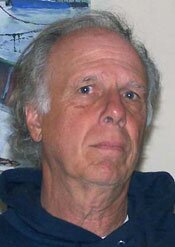 On your website you write, “For me, theatre and painting have been inextricably linked from early childhood.” Can you elaborate on that?
On your website you write, “For me, theatre and painting have been inextricably linked from early childhood.” Can you elaborate on that?
It’s more a matter of all the arts being linked. I define art as the means by which we share with others our unique experience of life through the metaphors of our chosen medium. By an act of fate, theatre and painting happen to be the disciplines that I was drawn to, and the language of which I intuitively understood. It might just as easily have turned out to be music and poetry, or something else. Still though, for me painting and theatre have a special affinity. Perhaps it’s the stepping out of time into another world. Perhaps it’s the sense of drama.
"The Role of an Artist: An Interview with John Crowther" provides a captivating glimpse into the world of artistic creation, shedding light on the multifaceted responsibilities that artists undertake.
Reflecting on this interview, it's evident that the principles of dedication, expertise, and effective communication transcend different domains. "The Role of an Artist" encourages us to appreciate the nuances of artistic creation, while the concept of a dissertation writing service reminds us of the value of seeking specialized assistance to navigate the challenges of academic pursuits. Both endeavors lead to growth, enrichment, and the pursuit of excellence in their respective spheres.
What do you think is the purpose of art?
It’s a terrific question. I believe the human being is genetically designed through evolution to communicate in two different types of language, the common language of consensus, which consists of words and sounds and images whose meaning we agree on, and the language of art, which attempts to give shape to ideas and feelings that are more profoundly personal and for which we have no established frame of reference. The language of consensus allows us to pass along information critical to survival: how to build a fire, which plants are poisonous, where’s the best hunting. The language of art connects us on a deeply intimate, intuitive level that is at once spiritual and emotional. It also is necessary to survival, allowing us to discover the unspoken bonds we all share, and to seek meaning and solace in an existence that often seems incomprehensible. The paintings of Giotto tell me more about who we are, where we came from, and the mystery of existence than all the volumes of history available to us.
Then, what do you think is the purpose of the artist?
The artist, like the scientist, seeks to bring order to an otherwise seemingly disorderly world. But the artist nowadays is an endangered species. We’re besieged by so much information, much of it useless, that little room is left for genuine art, art that does more than merely distract, but rather illuminates and ennobles by appealing to our instincts. It’s why being an artist is such an important calling.
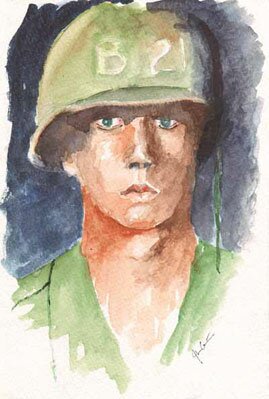 What separates good art from great art?
What separates good art from great art?
Good art succeeds in using a high level of technical skill to replicate the images and icons established by the language of consensus. From good art comes the masterpiece, which is literally what the word says, a piece created by a master. Great art introduces new symbols and forms and in so doing reinvigorates and enriches the language of consensus.
You teach portrait classes. Tell me about that.
I teach John Howard Sanden’s techniques, which I’ve found enormously effective, under the umbrella of the Portrait Clubs of America. John and his wife Elizabeth are committed to encouraging and supporting portraiture, which some see as a dying art. The exciting thing about it is the leeway you’re given as a teacher to develop your classes the way that works best for you and your students.
Did you go to art school?
I was fortunate in that my parents supported my desire to go into the arts, so I had extensive training at the Museum of Modern Art and the Art Students League in New York when I was a quite young. It was mainly about techniques and tricks. They’re important and valuable, but becoming an artist is so much more than that, and you don’t learn it in school. It’s about the acquisition of values that comes from experience, and learning to distinguish for one’s self what is true and harmonious and what is merely repetitious or derivative.
Did you have a mentor?
I guess the closest to a mentor I had was Thomas Hart Benton, who was celebrated as one of the original American “regionalists” and then later was vilified for it by curators and academics as his work went out of fashion. He was a neighbor of my family on Martha’s Vineyard. I dated his daughter, and when I was sixteen I cleaned his brushes and swept the floor in exchange for advice and critiques. Many people don’t realize that he played an important role in the life of Jackson Pollock, who studied drawing and classical composition with him for a long period. But back then the concept of mentor didn’t really exist, other than Mentor having been Odysseus’s advisor entrusted with the education of Telemachus.
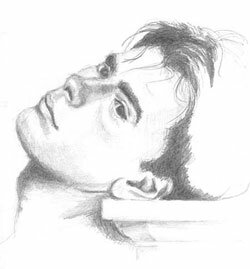 When did you start your art career?
When did you start your art career?
When I was a teenager I’d originally intended to be an artist. That got me involved in theatre, designing sets, which in turn steered me toward acting, directing, and writing. By the time I was in college I was still seriously considering a career in painting, but that was in the 60’s, when you could forget about having a major career in art if you weren’t an abstract expressionist. I gave it a try, but in the end abstraction just didn’t interest me. Frank Stella was at Princeton when I was, and I remember he used to store some of his larger canvases in the basement of the little theatre on campus. Black on black. It meant nothing to me. I stuck with representational painting while pursuing a parallel career in theatre and film, and have never regretted it.
What has been the highlight of your acting career thus far?
Without question, “FLLW, the Tragedies and Triumphs of Frank Lloyd Wright,” a one-man show I developed and have been performing around the country. His was an epic life. The theme of single-mindedly pursuing one’s vision in the face of tragedy and obstacles resonates deeply with me, and bringing it to life for audiences has been enormously satisfying.
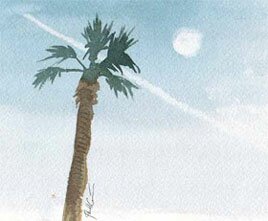 How has your artwork evolved?
How has your artwork evolved?
In terms of style I’ve always considered myself a realist, but for years my work was very painterly, almost impressionistic leaning toward expressionism. But it was really just a way to disguise my lack of drawing skills. Not that I couldn’t draw, I just wasn’t very disciplined about it. As I improved my drawing, my painting began to tighten up and lose spontaneity in the brushstrokes, so I had to struggle against that. I like to think that now I’m better at putting down on paper or canvas the images in my head. In other words, I’m letting my style be dictated by my skills rather than by my lack of them.
What themes do you pursue in your artwork?
I don’t think I pursue a specific theme so much as I discover themes running through my work as I look back on it. More to the point, there are themes that are important to me as a human being – the quest for justice, the illusory nature of memory, the importance of our cultural stories and myths, the mystery and glory of nature, the elevation of the spirit. When I’m doing my job as an artist honestly, these themes should be reflected in the work.
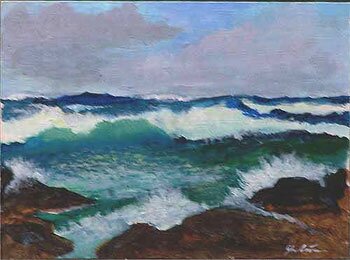 How have cultural or environmental factors have influenced your art?
How have cultural or environmental factors have influenced your art?
I was brought up in what I’d call a privileged environment. My parents ingrained in my brothers and me values of hard work, honesty, and decency that I hope are reflected in who I am and therefore in my work. I also had an appreciation for the arts instilled in me from an early age. My father was the film critic on The New York Times for many years, and my mother managed a movie theatre before becoming a literary agent, so a lot of our family friends were highly successful writers, artists, actors, filmmakers, and so on. I grew up thinking of the arts as a completely normal occupation, not a rebellion against the establishment. Living in New York, I was regularly taken to museums, theatre, and films, all of which were frequently discussed at the dinner table. I first “discovered” Picasso when I was about 12 and was taken to the Museum of Modern Art. Nobody had prepared me for him, I just saw his work and got it instantly, without explanation. I insisted on buying a small reproduction of “Girl Before a Mirror” that hung in my bedroom for years after that. I think that living in Europe for 10 years also did a great deal to shape my sensibilities.
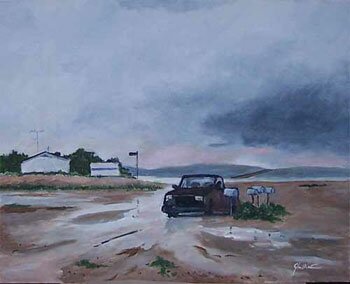 Where in Europe did you live, and what were you doing there?
Where in Europe did you live, and what were you doing there?
I lived in Rome, which was amazing. The Italians are very culturally sophisticated, even the poorest farmer and the guy repairing the plumbing. I went there originally to direct a film, “The Martlet’s Tale,” starring Katina Paxinou. I met my wife, who played one of the leads, and wound up staying. I was shooting at Cinecitta on a sound stage next to the one where Federico Fellini was making “I Clowns.” There I was, a 30-year old American, running into Fellini every day in the commissary and having him ask how my film was going. I would also duck onto his set when our crew was lighting to watch him work. It was pretty heady stuff. My wife has a farm in Tuscany where I conduct painting workshops, which I talk about on my website.
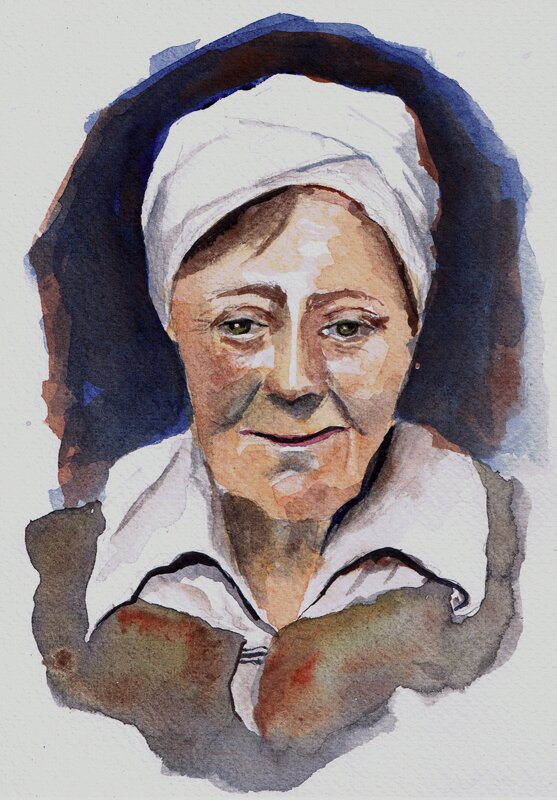 Who are your favorite artists?
Who are your favorite artists?
Thomas Hart Benton for one, for the way he mastered classical form and composition, and reshaped it to his own unique and thoroughly contemporary expressive purpose. To me though, Diego Velazquez stands at the pinnacle of what art should be, bringing together the chiaroscuro of Caravaggio and the spontaneous brushwork of Rubens in the perfect marriage of concept and technique.
Far and away my favorite contemporary artist has to be Lucian Freud. He’s fearless, a high wire act who's spent his entire life working without a net.
But my single favorite painting has to be the 17th century "Head of a Woman" by Flemish artist Michael Sweerts. Totally contemporary in technique and execution, it embodies the timelessness of the great masters. This small, simple composition is perfection in every respect, and the eponymous woman still lives more than three hundred years later.
How do these artists influence your work?
While there are many artists throughout history I admire, they represent to me the ideal, the mastery of technique serving a unique vision. I believe that control is essential to freedom of expression, and that art consists of two aspects, concept and technical skill, that is, the ability to control the medium so that we can give shape to the ideas, dreams, and feelings in our heads. The artists I mentioned are the frontrunners while I’m bringing up the rear, but they show the rest of us the way.
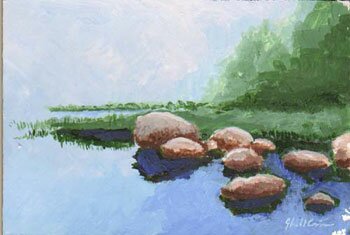 What sort of message do you wish to communicate through your art?
What sort of message do you wish to communicate through your art?
More than anything else, that art is not merely important, but essential to human existence.
What reaction from a viewer makes you happiest?
I’m not interested in making pretty pictures. If a viewer experiences an emotion or understands what I’m trying to convey then I’m satisfied. I try to do work that suggests questions that are left unanswered. Hopefully a viewer is interested enough to supply their own answers.
Where do you find inspiration?
By keeping the senses open one is besieged by inspiration. It’s never enough for me to think that something would make a good subject for a painting. Before I go to work I have to know what it is that attracts me, and why I want to paint it. Sometimes I have to do a series of sketches. Sometimes it’s just an idea I can’t get out of my head. There usually comes a moment when there’s no longer a choice. I just know I have to get it down.
Why do you find figures to be interesting subject matter?
They reveal us to ourselves. In other people we see mirror images of our own personas, both in terms of what we fear and what we aspire to. Through figurative painting – and drama for that matter – we see how commoners are kings, and kings are commoners. One of the important qualities of a painter who does figurative work is empathy. The nude can be especially evocative in its removal of all defenses. It allows for a wide range of possibilities, beauty, ugliness, self-consciousness, pride, embarrassment, exhibitionism, freedom of spirit, joy—the entire spectrum of human experience.
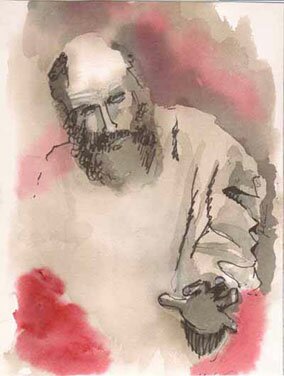 What constitutes a captivating pose?
What constitutes a captivating pose?
The word “pose” always bothers me, both as a verb and a noun. It suggests that the flow of the subject’s life has been interrupted for the artificial act of being painted, or indeed photographed. What interests me is the challenge of seizing an instant that reveals something about the life of the subject. It’s all about relationships. How is the subject relating to the artist? To the viewer? To an unseen interlocutor? To their surroundings? A good model is an actor really, experiencing a moment of truth.
What is your favorite medium?
I primarily paint in oil and watercolor, and use graphite and conté for drawing. For a number of years I worked in acrylics, but have gone back to oils because I love the range of what you can do with them, from time-consuming glazing to wet in wet, slapping paint on the canvas and shoving it around, wiping it off, scraping at it, allowing the work to emerge. I also love watercolor. The discovery that it is far more controllable and forgiving than people tend to think has been a wonderful revelation to me.
How long does it typically take you to complete a finished work, and how do you know when a piece is done?
I literally have one watercolor that I’ve been working on for over 20 years, though admittedly that’s excessive. I’ll probably never finish it to my satisfaction, but it has improved. I don’t know that a piece is ever really done. There just comes a time when I know intuitively that I’ve learned whatever it is I need to know and I move on.
I used to work much faster, and tended to want to get a work done quickly, but I think that had to do with a lack of confidence. Now that I know where I’m headed and have a better control of how to get there I’m more willing to take time. To be a bit more specific, it depends on the medium and how I’m using it. I can complete a plein air watercolor to my satisfaction in a couple of hours. On the other hand I’ve been known to put fifty or sixty hours into a 5x7 inch oil miniature.
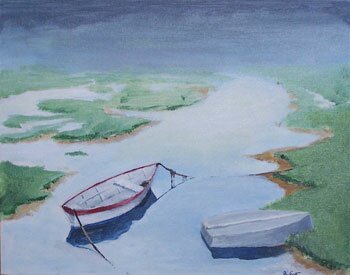 What are the greatest challenges you face when making your art?
What are the greatest challenges you face when making your art?
A major challenge, I think, is trying to stay honest, and not become derivative. Trying to find my own path has been an ongoing struggle, defining who I am as a human being, exploring how to express it in my art, and developing the techniques and skills that permit me to give shape to the images in my head. In the film “The Horse’s Mouth,” Alec Guinness as the fictional painter Gully Jimson looks at a huge mural he’s struggled to realize and mutters unhappily, “it’s not what I had in mind.” That says it all. As for obstacles, it’s the times when the exploration becomes conflict and doubt, and threatens to shut the whole process down.
What has been your biggest achievement during your career as an artist?
Learning to draw hands. I’m not kidding.
Have you any regrets in terms of your art career?
Only that I’ve always tended to be lazy, which is a result of doubt, conflict, and fear. I think I could have accomplished much more had I paid less attention to what others think of my work and focused more on specific goals.
What advice would you give to an aspiring artist?
Know what you want to achieve, and then work toward it tirelessly. Set specific goals that are attainable, and when you’ve mastered something don’t repeat yourself, move on to something else. Think of everything you do in terms of the lessons to be learned. That way you’ll always judge your work through your own eyes, not the eyes of others.
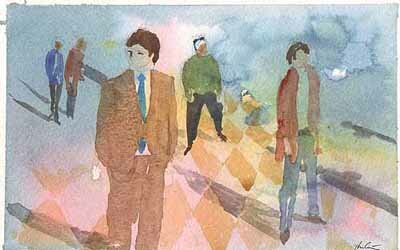 What are a few of your favorite art books?
What are a few of your favorite art books?
I greatly enjoyed Paul Johnson’s weighty Art: A New History, though I don’t agree with everything he says. He does a great job of giving a wide-ranging overview without falling into the misleading classifications that plague academics and critics. I love Dear Theo, Vincent Van Gogh’s letters to his brother that permit an amazing look at the life and mental swings of an artist. Michelangelo and the Pope's Ceiling is a meticulously researched work that documents practically day to day the painting of the Sistine Chapel in a way that makes you feel as if you were there experiencing it. And my favorite, always at my bedside, is Velazquez : The Technique of Genius, by Jonathan Brown and Carmen Carrido. It’s a brilliant analysis of both content and technical means.
How can one acquire your work?
Anyone interested in either originals or prints can contact me directly through my website.
Do you accept commissions?
I do accept commissions, though I prefer to work from life rather than photos. It’s not that I’m philosophically opposed to the use of photographic reference, I just don’t enjoy the process.
Thanks John. I appreciate your taking the time to share your views with us today.
|
Facts at a Glance
|
|
|
Artist:
|
John Crowther |
|
Location:
|
Los Angeles, California USA |
|
Commissions Accepted?
|
Yes |
|
Gallery Representation
|
The Bird House Gallery in Nyack, New York |
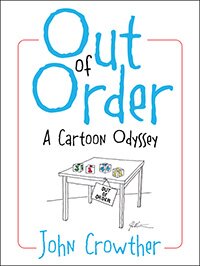 |
John Crowther has published a book called Out of Order: A Cartoon Odyssey Everyone appreciates a good laugh, so this book makes a great gift. |
Artist-Perspectives.com Home Page
©2005 Artist-Perspectives.com